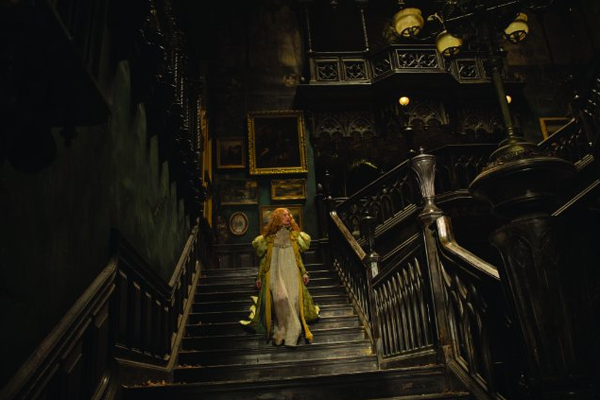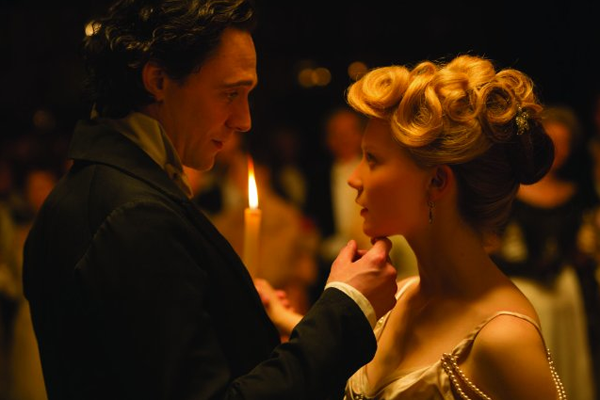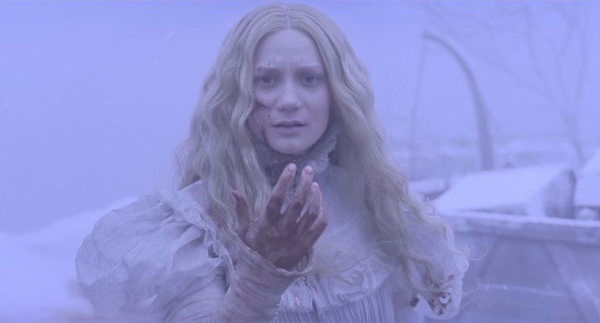
Guillermo del Toro’s welcome return to horror, Crimson Peak, is a classic haunted house tale in the tradition of gothic romance and the Edgar Allen Poe adaptations of Roger Corman, filtered through the director’s inimitable eye for beauty in the macabre.
The eponymous Crimson Peak refers to the estate of siblings Thomas and Lucille Sharpe (Hiddleston and Chastain, respectively), a dilapidated mansion that sets atop a red clay mine that gets its name from the red clay that seeps up through the snow and even the house. In one of the film’s many unsettling touches, the floors and walls of the manor literally ooze red clay from their cracks.
It is here that Thomas brings his newly betrothed Edith (Mia Wasikowska), an aspiring writer of ghost stories. Having seen ghosts her whole life, Edith quickly begins to see the ghastly dead that haunt Crimson Peak while both Thomas and the cold Lucille assure Edith it is just the creaking of their crumbling castle. What follows is a fairly standard ghost mystery, perhaps the no-frills story is itself an homage to the haunted house films of yore, but the way it is presented and the performances of the three leads elevate it. With her role in Stoker and now Crimson Peak, Mia Wasikowska shows there is no better actor to play the part of a gothic ingénue. Tom Hiddleston brings his Loki charm with a touch of vulnerability to keep you guessing his true intentions. And Jessica Chastain is pure malice, but of an empathic sort. Each one is, shall we say, fleshed out.
Guillermo del Toro’s unparalleled production design gives Crimson Peak its true character. The embellished costumes, the gothic lighting (and more importantly the shadows), and the hyper-rich greens and, yes, crimsons lend the film its palpable atmosphere, one of paranormal mystery and foreboding. If there is one complaint it is with the ghosts themselves.
Unlike many contemporary horror films, del Toro lets us see his gruesome creations up close and in long-held shots. The viewer’s imagination is often scarier than what’s actually on the screen, so by holding on the ghosts it can either demystify what is so terrifying about them or amplify the dread of their presence as if to say, “no, this is not a dream.” Unfortunately to me, the overuse of CGI wispies emanating from the practical effect ghosts does a little too much of the former. It’s a niggling quibble on an otherwise excellent film, but one that seems worth mentioning about a director whose visual choices rarely let me down.















